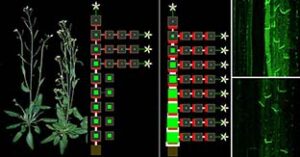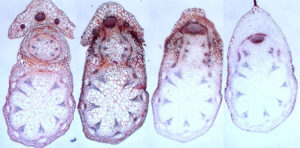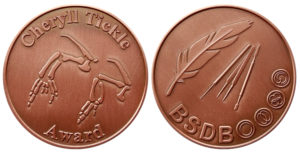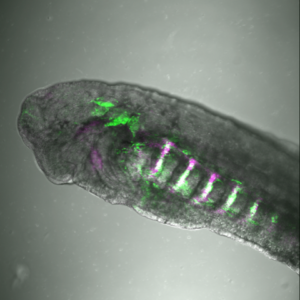 The Waddington Medal is the only national award in Developmental Biology. It honours outstanding research performance as well as services to the subject community. The medal is awarded annually at the BSDB Spring Meeting, where the recipient presents the Waddington Medal Lecture.
The Waddington Medal is the only national award in Developmental Biology. It honours outstanding research performance as well as services to the subject community. The medal is awarded annually at the BSDB Spring Meeting, where the recipient presents the Waddington Medal Lecture.
We are very pleased to announce that this year’s Waddington medal winner is Professor Dame Ottoline Leyser DBE FRS. After having served on the BSDB committee and then as treasurer (1999-2009), and only recently having stepped down as our chair, her efforts in supporting our community are well known. This prize will add to
a number of Ottoline’s awards that include listing in the 2017 New Year Honours list as DBE for her services to plant science, science in society and equality and diversity in the sciences. She has also been awarded the Society of Experimental Biology’s President’s Medal (2000), the Royal Society Rosalind Franklin Award (2007), the International Plant Growth Substance Association’s Silver Medal (2010), the UK Genetics Society Med
al (2016) and the EMBO Women in Science Award (2017). She is also a fellow of the Royal Society, an foreign associate of the US National Academy of Sciences, a member of EMBO and the Leopoldina. So, we are very pleased to be able to add the 2020 Waddington medal to this list, in recognition of her contributions to UK Developmental Biology research and our community.

Ottoline’s career began as an undergraduate and then PhD student in the Department of Genetics at the University of Cambridge. She then travelled to Indiana University as part of her post-doctoral research before establishing her lab through a lectureship at the University of York in 1994. In 2011 she was instrumental in establishing the Sainsbury lab in Cambridge, where she is now director.
“Ottoline’s current research programme remains refreshing and exciting, embracing computational modelling, quantitative traits and selective breeding to give an integrated systems view of the regulation of plant form”. Tanya Whitfield and Nick Monk, University of Sheffield.
Ottoline’s work has resulted in huge advances in our knowledge of hormone action during the control of branching in plant development. Notable contributions include being among the first to exploit the advantages of Arabidopsis as a model species to study hormone action. In doing so, she revealed the mechanism by which the classical plant hormone auxin act

s, having identified the auxin receptor in collaboration with Mark Estelle. In addition, she has do
ne pioneering work in understanding the function of MAX genes in controlling branching. Her work exemplifies how a creative application of inter-disciplinary approaches, experimental embryology and genetics can be combined together to understand the fundamental principles of development. In doing so, it represents the very best of developmental biology and communicates clearly the excitement that can derived from research in our subject.
“She has also been a great advocate for Science, Women, and developmental biology in the political arena as well as for the general public”. Claudio Stern (University College London) and Enrico Coen (John Innes Centre).
Alongside her research career, Ottoline has driven many initiatives for improve equality and diversity in the Sciences. One of her best-known contributions has been the publication of her booklet “Mothers in Science: 64 ways to have it all”. Her approach here was to lead by example, and has proven to be very effective. We encourage our members to read recent interviews with Ottoline that can be found in Development and the Royal Society of Biology.
“When I was pregnant with twins and trying to run my newly-formed research group I came across Ottoline’s little book “Mothers In Science”. It was so important to me, and is just one example of the many things that Ottoline has done that have been important to so many people.” Sally Lowell, University of Edinburgh.

Ottoline continues to make substantial contributions to both teaching and research aspects of the Developmental biology community. Recent examples include serving on the Editorial Board of Development, sitting on the Nuffield council on Bioethics, and being a Member of Council of the Royal Society. She has been co-Editor in Chief for Current Opinion Plant Biology. Ottoline is also a committed teacher of developmental biology, and is the joint author of the textbook Mechanisms in Plant Development (Leyser and Day, 2003, Blackwell Science Ltd).
Selected papers:
Leyser HM, Lincoln CA, Timpte C, Lammer D, Turner J, Estelle M (1993). Arabidopsis auxin-resistance gene AXR1 encodes a protein related to ubiquitin-activating enzyme E1. Nature 364:161-4.
Rouse D, Mackay P, Stirnberg P, Estelle M, Leyser O (1998). Changes in auxin response from mutations in an AUX/IAA gene. Science 279:1371-3.
Sabatini, S; Beis, D; Wolkenfelt, H; et al. (1999). An auxin-dependent distal organizer of pattern and polarity in the Arabidopsis root. Cell. 99: 463-472.
Gray, WM; Kepinski, S; Rouse, D; et al. (2001). Auxin regulates SCFTIR1-dependent degradation of AUX/IAA proteins. Nature 414: 271-276.
Stirnberg P, van De Sande K, Leyser HM (2002). MAX1 and MAX2 control lateral shoot branching in Arabidopsis. Development 129:1131-41.
Sorefan, K; Booker, J; Haurogne, K; et al. MAX4 and RMS1 are orthologous dioxygenase-like genes that regulate shoot branching in Arabidopsis and pea. (2003). Genes & Development. 17: 1469-1474.
Booker, J; Auldridge, M; Wills, S; et al. (2004). MAX3/CCD7 is a carotenoid cleavage dioxygenase required for the synthesis of a novel plant signaling molecule. Current Biology. 14:1232-1238.
Kepinski S, Leyser O (2005). The Arabidopsis F-box protein TIR1 is an auxin receptor. Nature 435:446-51.
Shinohara N, Taylor C, Leyser O (2013). Strigolactone can promote or inhibit shoot branching by triggering rapid depletion of the auxin efflux protein PIN1 from the plasma membrane. PLoS Biol. 11:e1001474.





